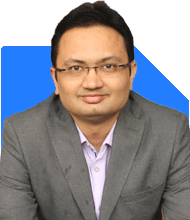Hello Sir,
I want to invest in MFs SIP for the next 5 years till my retirement. I can invest 70,000 per month. I am very new in this field. I have no debts or loans, and I am having 50L in FD.
Could you please let me know the best MF names and allocation percentage to gain better returns for my retirement corpus.
Ans: Investing Rs 70,000 monthly in mutual funds for the next five years is a wise decision. Your financial stability and disciplined savings will help build a solid retirement corpus. With the right fund allocation and selection, you can maximise returns.
Below is a structured plan for your mutual fund investments to align with your retirement goal.
Investment Strategy and Allocation
A well-diversified portfolio will help achieve optimal growth and manage risk. Allocating funds to different categories of mutual funds will allow balanced growth and stability.
Suggested Allocation:
Large-Cap Funds: 40%
Large-cap funds invest in well-established, top-performing companies. These funds are relatively stable and offer steady growth, which aligns well with your retirement goal.
Flexi-Cap or Multi-Cap Funds: 30%
Flexi-cap or multi-cap funds invest across large, mid, and small-cap segments. They add growth potential by allowing flexibility in allocation based on market conditions. This helps balance risks and boosts returns.
Mid-Cap Funds: 20%
Mid-cap funds invest in mid-sized companies that have growth potential. While they carry slightly higher risk than large-cap funds, they can significantly enhance your returns.
Debt or Liquid Funds: 10%
Debt or liquid funds add stability and liquidity to your portfolio. These funds are less volatile, making them a safe place to park a portion of your funds. They provide easier access in case you need emergency funds during retirement.
By following this allocation, you can optimise growth while maintaining a level of safety in your portfolio.
Importance of Actively Managed Funds Over Index Funds
Investing in actively managed funds is beneficial, especially with retirement in mind. Actively managed funds have experienced managers who aim to beat the market, offering better returns than index funds, which merely mirror the market.
Disadvantages of Index Funds:
Lack of Flexibility: Index funds are bound to follow the index strictly. This limits growth during market fluctuations.
Missed Opportunities: Index funds cannot take advantage of market trends or opportunities, as they lack active management.
Limited Downside Protection: Actively managed funds provide some downside protection as managers can adjust portfolios based on market conditions.
Actively managed funds, managed by a qualified Mutual Fund Distributor (MFD) or Certified Financial Planner (CFP), can help you achieve your goals through better risk management and strategic portfolio adjustments.
Benefits of Choosing Regular Funds Over Direct Funds
While direct funds might appear attractive with lower expense ratios, regular funds often yield better results for investors. Investing through a CFP-backed MFD can provide significant advantages, especially if you are new to mutual funds.
Drawbacks of Direct Funds:
Lack of Guidance: Direct funds do not offer professional advice, which is essential for effective long-term investing.
Higher Risk for New Investors: Without guidance, new investors can struggle with fund selection and portfolio rebalancing, impacting returns.
Time-Intensive: Managing direct funds requires regular analysis and time. Regular funds, however, include expert oversight, ensuring adjustments are made as needed.
By investing in regular funds through a Certified Financial Planner, you gain both expertise and ongoing management, which can lead to higher returns and peace of mind.
Tax Implications on Your Mutual Fund Returns
Understanding the tax rules on mutual fund gains is essential for maximising post-tax returns. Let’s break down the key taxation rules for equity and debt mutual funds.
Equity Funds:
Long-term capital gains (LTCG) over Rs 1.25 lakh are taxed at 12.5%. Short-term gains (for holdings under one year) are taxed at 20%.
Debt Funds:
Gains from debt mutual funds are taxed as per your income tax slab for both long-term and short-term investments.
Planning with tax efficiency in mind will help maximise your retirement corpus. A certified financial planner can guide you on strategies to manage taxes while achieving your goals.
Estimating Future Investment Amount
To achieve a retirement corpus of Rs 2 crores, it’s important to consider factors like inflation, expected returns, and your time horizon. Based on your goal, a certified financial planner can provide personalised investment projections. While mutual funds are known for long-term growth, regular monitoring and adjustments will keep your plan on track.
Final Insights
Your monthly SIP of Rs 70,000, spread across diversified funds, will create a strong foundation for your retirement corpus. With no debts and a secure foundation in fixed deposits, you are well-positioned for growth. By focusing on an actively managed and diversified portfolio, you can potentially outperform the market and meet your financial objectives.
Key Takeaways:
Stay invested in a diversified mix of large-cap, flexi-cap, mid-cap, and debt funds.
Avoid index and direct funds; regular, actively managed funds through a CFP provide strategic growth and management.
Monitor tax implications to maximise post-tax returns.
Consult with a certified financial planner for personalised advice and portfolio adjustments.
Best Regards,
K. Ramalingam, MBA, CFP,
Chief Financial Planner,
www.holisticinvestment.in
https://www.youtube.com/@HolisticInvestment































